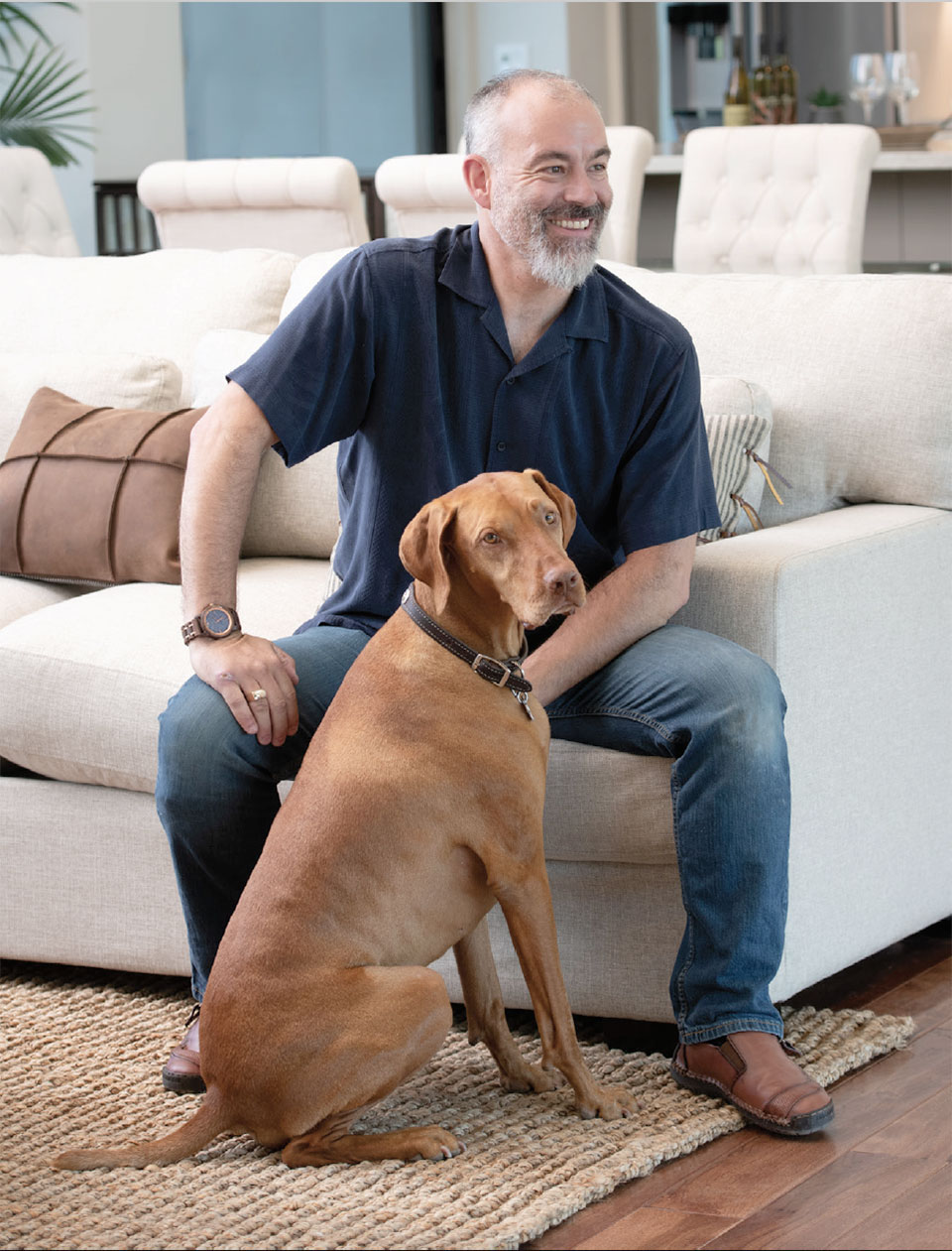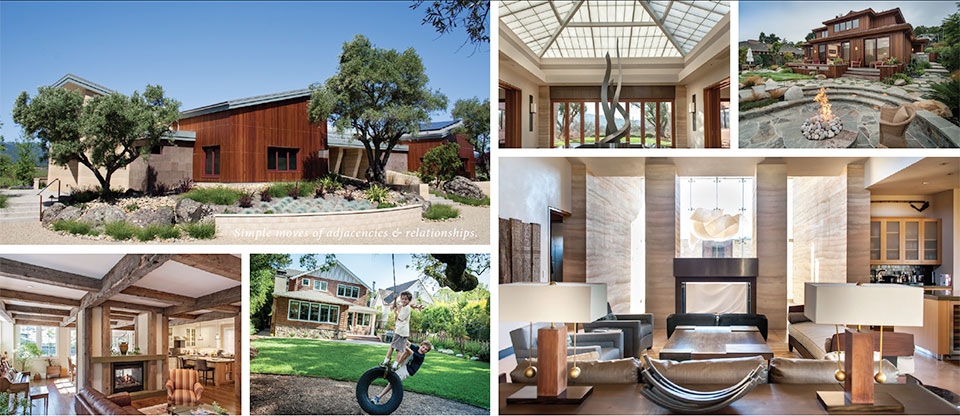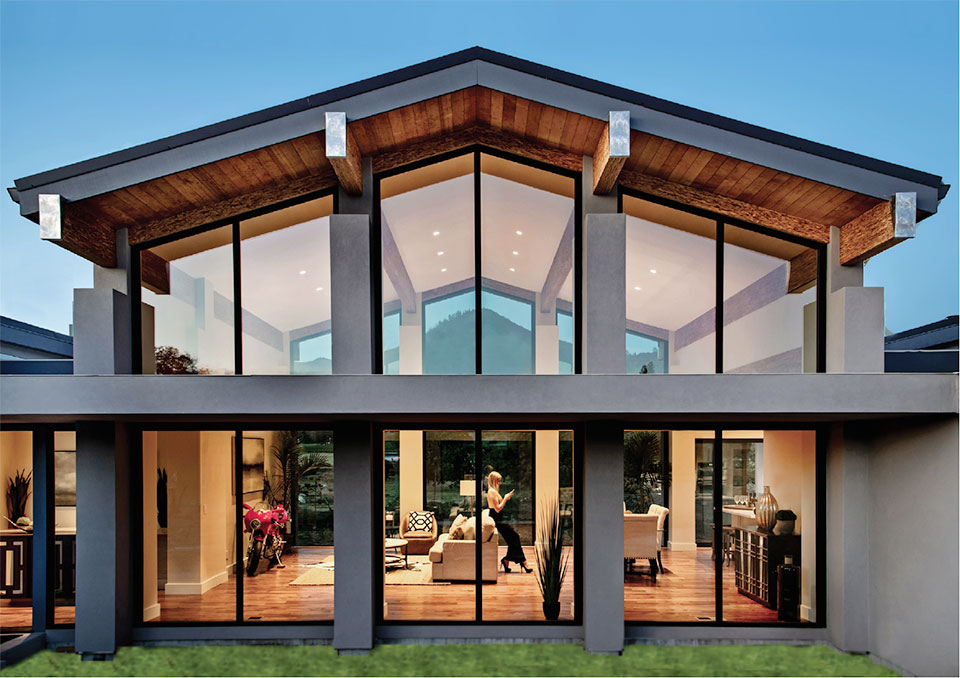WHEN TALENTED PROFESSIONALS TALK, WE LISTEN.
ADMIT IT, YOU HAVE AN INQUIRING MIND, AND YOU WANT TO KNOW ABOUT THE TEAM DESIGNING YOUR JACKSON HOLE DREAM HOME. WE UNDERSTAND THE INCLINATION. SO WE DECIDED TO BRING YOU SHOP TALK, CONVERSATIONS WITH THE TALENTED PROS DESIGNING, BUILDING, OUTFITTING YOUR HOMES AND THOSE WHO OFFER OPTIONS FOR WORK SPACES OUTSIDE YOUR HOME.

Wagstaff + Rogers Architects
Eric Rogers, AIA Principal Architect
Eric Rogers heads Wagstaff + Rogers Architects, a multi-regional residential design services firm focused on Jackson and the Teton Valley as well as Marin County and California’s wine country. Their methodology infuses traditional craftsmanship with a passion for new technologies, materials, and a strong philosophy about art and science in architecture. Their work includes new, high-end custom residential and remodel projects as well as mixed-use, institutional, historic rehabilitation, and commercial architecture. More than just focused on architectural design, the company builds relationships with clients, contractors, consultants, and community that are key to its continuity.
What is your goal as an architect?
Ease of life. I aspire to minimize the impact that architectural design and construction generally have on our clients’ lifestyles, whether we are designing a new house or remodeling an existing home. My goal is to make the process smoother, more comfortable, and more relaxed.
When did you know you wanted to be an architect?
In my eighth-grade art class we were assigned a two-point perspective drawing. I chose to draw a home—a simple box with a pitched roof, two windows, a porch, and a front door. Picking the location of the horizon line turned out to be extremely important in presenting a believable drawing and I chose a view that would be most suited to an ant. The stairs, porch, and front door were so far off-scale and the drawing was odd-looking, but I was hooked on architecture from then on!
What can clients expect working with Wagstaff + Rogers Architects?
We have a responsibility to coach our clients about the architect’s role and responsibility as well as the design and construction process. Cultivating an environment of education fosters trust, creates good communication, relieves frustration, and builds successful relationships with our clients. A good working relationship between the architect and client is crucial to the success of any project.
We value delivering exceptional clarity to our clients about the scope of our work and how we will partner with contractors. This transparency helps down the road when the inevitable hiccups happen during construction and events arise.
The main guiding principle for us is that we must share a mutual understanding of the client’s goals and needs. We like to take the opportunity to align architectural design and client expectations. That helps us manage risk and define how we can exceed expectations and have a satisfied client, which is how we measure the success of our projects.

“I very much appreciate the opportunity to provide insight and my architectural expertise to create great projects of all sizes.”
–Eric Rogers, AIA Principal Architect
What does sustainable design mean to you?
Our green design philosophy encourages environmentally responsible decisions at each phase of the design process, reducing negative impacts on the environment and improving the health and welfare of the building occu-pants without substantially compromising the bottom line. For 14 years now, we have used green building technologies in our drawings and specifications. We take an integrated, holistic approach that positively impacts all phases of a building’s life cycle, including design and construction. As an investment, a green building will generally bring a higher market rate value than a conventional building.
How do you achieve great design?
Simple moves of adjacencies and relation-ships [pictured above on the left]. https://www.wagstaffrogersarch.com/projects/st-helena-guest-house. The concept of this building is one of enclosing space without creating barricades to the outside, which in this case, was a vineyard and the view of a local iconic mountain. I was very conscious of the character of the materials throughout the project—what they were used for and where they came from. A sustainable approach was valued from inception and everything was locally sourced—from the rammed earth walls to the concrete tiles—everything was crafted by local artisans from materials mined within a few miles of the building site to locally sourced and manufactured products.. What we ended up with was not only an extremely efficient building, but also a warm, contemporary home.
What do you enjoy most about work?
I thoroughly enjoy the pride of the architectural process at each phase of the project. I enjoy constantly going back and forth between thinking on a macro vs. micro scale of a building project. The building details are as important as the overall design master plan.
What are the main points of your design philosophy?
Communication, livability, and designing something relevant. Choosing an architect who is willing to communicate in your style is imperative. If we don’t speak each other’s language from the start, it’s hard to share important information with one another. We also focus on the idea of creating a spectacular piece of architecture against designing a utilitarian space that suits the basic needs of a homeowner’s vision. It is important not to lose unique facets of design; the challenge of balancing the theory of ‘art in architecture’ and the emphasis placed on concept materialization is one of the biggest design challenges.
Lastly, the definition of relevance in architecture has many angles. There’s the ideology of a specific type of architecture and what it means to stay up on current trends and technology to create the best product possible. The bigger challenge for me is designing unique solutions and staying true to my design philosophy. That deeper level of creativity requires trying different approaches and a lot of flexibility from myself, my client, as well as the general contractor.
What’s your favorite part about being an architect?
I very much appreciate the opportunity to provide insight and my architectural expertise to create great projects of all sizes. I love to be closely involved and I truly enjoy helping folks fulfill their dreams.
